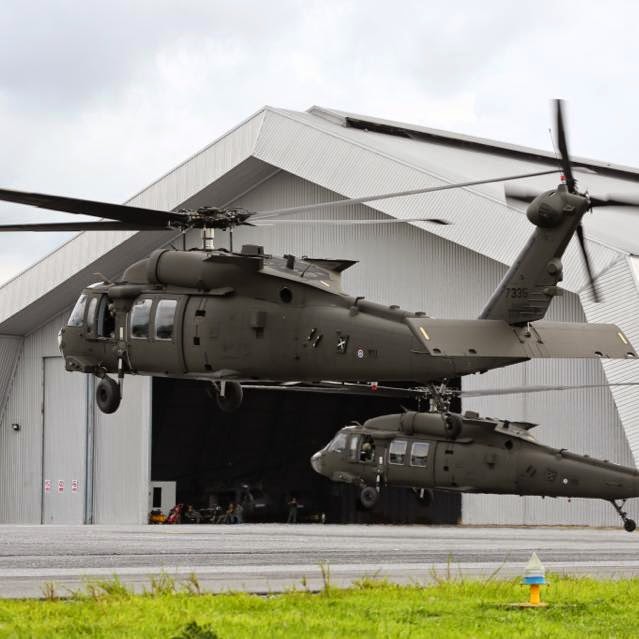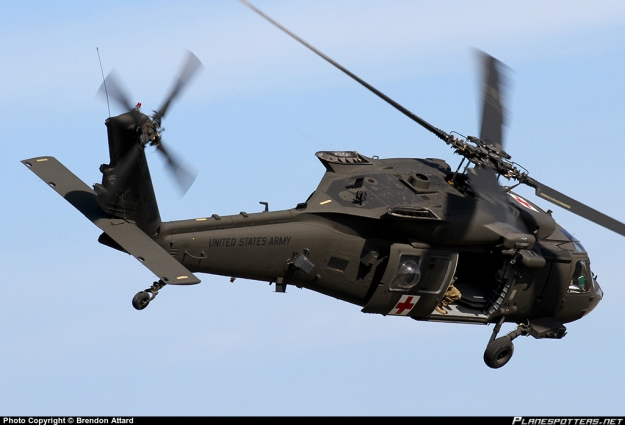Security First: Vital Action In UH 60 Helicopter Maintenance
Wiki Article
Navigating Uh 60 Helicopter Regulations and Compliance Requirements

Regulatory Structure Summary
The regulative framework governing UH-60 helicopter procedures incorporates a facility collection of requirements and rules established by aviation authorities. These laws are made to make certain the secure and effective procedure of UH-60 helicopters in different atmospheres. The Federal Aviation Administration (FAA) plays a main function in establishing and imposing these regulations, which cover a vast array of functional elements, including airworthiness standards, pilot qualifications, upkeep needs, and functional procedures.Conformity with these laws is crucial for helicopter drivers to keep the highest degree of safety and security and operational honesty. Failure to follow these guidelines can result in serious effects, including crashes, injuries, and regulative sanctions. Helicopter drivers must remain informed regarding the most current governing developments and ensure that their operations are in full conformity with all suitable regulations and criteria.
Airworthiness Instructions and Assessments
Among the regulatory framework governing UH-60 helicopter operations, an important emphasis rests on conformity with Airworthiness Directives and performing thorough evaluations to support security requirements and operational dependability. Airworthiness Regulations (ADs) are provided by air travel authorities to deal with dangerous problems in aircraft, including the UH-60 helicopter, and mandate specific actions to be taken by proprietors or operators. Compliance with ADs is obligatory, and failure to comply with these instructions can cause severe repercussions, including grounding of the aircraft.
Normal examinations are extremely important to making certain the airworthiness of UH-60 helicopters. These assessments include a variety of checks, from routine day-to-day assessments carried out by pilots before and after trips to a lot more extensive scheduled upkeep assessments accomplished by certified technicians. Furthermore, special assessments may be called for based upon particular problems or incidents. By adhering to a rigorous evaluation regimen, drivers can spot and address prospective issues without delay, consequently enhancing the safety and security and dependability of UH-60 helicopter procedures.
Pilot Certifications and Training

Pilot training for UH-60 helicopters is detailed and covers a variety of subjects, including airplane systems, emergency treatments, navigation, and mission-specific training. In addition, pilots undergo simulator training to exercise different emergency situation situations in a regulated atmosphere. This training aids pilots establish the necessary skills to take care of difficult scenarios efficiently.


Additionally, recurring training and expert advancement are necessary for UH-60 pilots to remain current with the newest laws, modern technology, and best practices. By spending in pilot certifications go to the website and training, drivers can improve safety, maximize efficiency, and guarantee conformity with regulatory needs in the operation of UH-60 helicopters.
Operational Limitations and Needs
Pilot credentials and training offer as the foundation for understanding the functional restrictions and requirements related to UH-60 helicopter procedures (uh 60). These operational constraints are established to make certain the security of the crew, guests, and the airplane itself. Operational constraints may consist of aspects such as weather, weight limitations, elevation restrictions, and operational limits. It is important for pilots to be well-versed in these constraints to make informed choices during trip operations. In addition, compliance demands, such as adhering to certain flight courses, interaction procedures, and emergency situation procedures, are essential for keeping operational security and governing compliance. Pilots have to stay present with all functional limitations and demands through routine training, instructions, and evaluates to minimize risks and make sure secure and efficient UH-60 helicopter operations. By prioritizing adherence to these functional standards, pilots can enhance the general safety and security and effectiveness of their objectives while promoting regulatory requirements.Emergency Treatments and Conformity Screening
Reliable emergency situation treatments and complete conformity screening are essential components of maintaining functional safety and security and governing adherence in UH-60 helicopter procedures. Emergency procedures encompass methods for numerous situations, including engine failures, fires, hydraulic issues, and extra. Pilots and staff members should be well-versed in these treatments to respond quickly and efficiently in emergencies. Normal conformity testing ensures that the helicopter fulfills all regulative requirements established forth by aeronautics authorities. This testing involves detailed examinations, checks, and evaluations to validate that the aircraft is airworthy and in compliance with Find Out More all relevant guidelines.Conformity screening also encompasses devices onboard the UH-60, such as communication systems, navigating tools, and safety gear. Guaranteeing that all devices is functioning properly and meets regulatory criteria is crucial for secure procedures. Furthermore, compliance testing might include simulations of emergency circumstances to examine the staff's reaction and the helicopter's efficiency under tension. By prioritizing emergency situation procedures and compliance screening, UH-60 drivers can mitigate risks and demonstrate their dedication to security and regulative compliance.
Verdict
In verdict, adherence to governing framework, compliance with airworthiness directives, pilot qualifications and training, operational limitations, and emergency procedures are important for navigating the policies and demands of operating a UH-60 helicopter. uh 60. It is important for operators to prioritize safety and guarantee full compliance with all applicable regulations to keep the airworthiness and functional honesty of the airplaneNavigating the regulatory landscape surrounding UH-60 helicopter procedures requires a nuanced understanding of the complex internet of guidelines and compliance requirements.Conformity with these laws is necessary for helicopter drivers to preserve the highest degrees of safety and security and operational integrity.Amidst the governing structure governing UH-60 her response helicopter procedures, a critical emphasis lies on compliance with Airworthiness Directives and performing complete assessments to promote security requirements and functional dependability.Effective emergency situation procedures and comprehensive conformity testing are crucial parts of preserving functional security and regulatory adherence in UH-60 helicopter procedures. Regular conformity testing makes certain that the helicopter satisfies all regulatory demands set forth by air travel authorities.
Report this wiki page